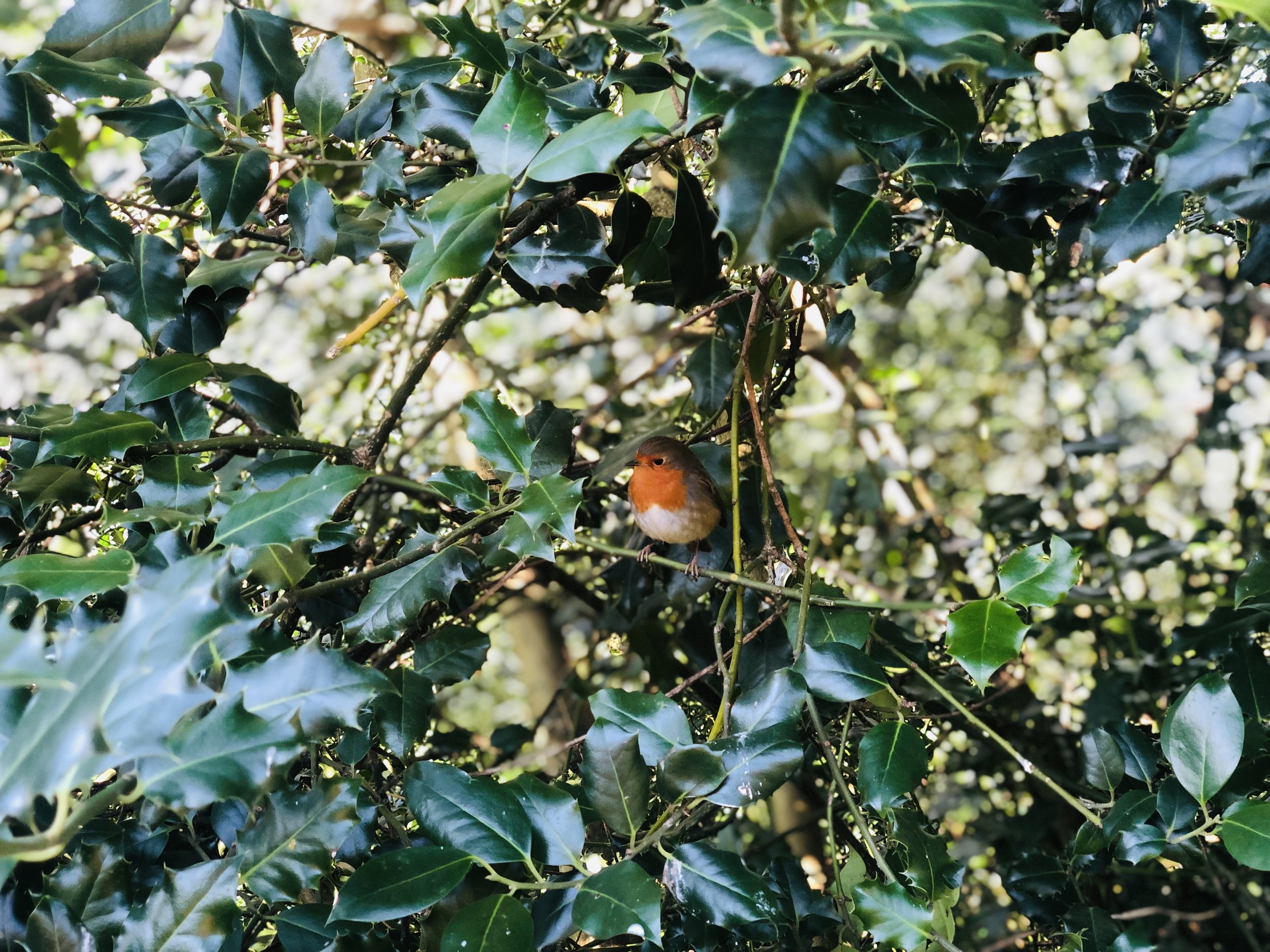Photo: American Robin, Joseph Mahoney/Audubon Photography Awards
Deidra Bryant
Happy spring! On that first warm day after the mini snowstorm this month, the scent from the snowmelt was enticing so I took a stroll around my neighborhood. Perpendicular to the swale bordering my residential community, there were dozens of robins hopping along the muddy grass looking for insects and worms that might have migrated to the surface. There were so many robins that I sent my friend a lengthy video of myself trying to count them all.
American Robin, Joseph Mahoney/Audubon Photography Awards
As you may already know, American Robins (Turdus migratorius) are ubiquitous in Northern Virginia, and for some people their presence signals that spring has sprung! As I was counting them on video, I remembered how many robins I encountered in Europe, conveniently named the European Robin (Erithacus rubecula). Although both species have the notable crimson-colored breast, the American Robin’s coloring extends all the way down to its belly, whereas the European Robin has a patch of color on its face that stops at the breast. Another difference is that the European Robin lays smaller cream-colored eggs with reddish-brownish splotches, while American Robins lay eggs with a distinctive blue color caused by a compound called “biliverdin,” a bile pigment passed on from the mother’s blood. There’s also the obvious difference in body size. American Robins are members of the thrush family (Turdidae) and range from 8 – 11 inches in length, whereas adult European Robins range from 5 – 5.5 inches in length and are from the Old-World flycatcher family (Muscicapidae). Even their songs and calls are very distinct. I found European Robin calls melodious and more high-pitched than that of the American Robin, and quickly discovered they were more solitary too.
Robin sp., Deidra Bryant
With all these differences, you may wonder how they can both be considered “robins.” The term “robin” is pretty much irrelevant in regards to taxonomy. In the 17th to 18th century European settlers designated our familiar backyard bird when they arrived in the New World. Why “American Robin” though? We can speculate on why, but I personally believe their hubris played a role in determining its name since a bird with a red breast was strictly called a “robin” in England during that time, and considered their robin to be the standard. As a result, it was possibly their goal to shoehorn flora and fauna in the newly established colonies into the familiar framework of Great Britain as if they attempted to cling on to aspects of their homeland. And let’s not forget about Australasia. Settlers arrived at the remote continent and decided to identify birds there as “robins” too like the Scarlet Robin (Petroica boodang).
Notice how all these birds have flame-colored breasts. I bet you’re starting to see a pattern here, right? Well, don’t get too carried away. There are 49 endemic species of robins (conveniently named Austrilasian robins) in the Petroicidae family and they look nothing like the American or the European Robins. Early ornithologists had named birds as robins from three different families in at least three different continents and things got more convoluted as time went on. During the 18th century, most of the New World Turdids were called robins because of their superficial similarity to the American one, but now have reverted to being called thrushes to better represent the genus’s cosmopolitan distribution. However, we still have robins from different families and genuses all over the globe that look very different from each other. For example, we have the White-breasted Robin located in southwest Australia (Eopsaltria georgiana), the Forest Robin from southeast Africa (Cossypha dichroa), the Japanese Robin (Larvivora akahige), the Siberian Blue Robin (Larvivora cyane), etc. On the Indian subcontinent there’s the Indian Robin (Copsychus fulicatu) and the Oriental magpie-robin o(Copsychus saulari).
The prior examples put scientists in a predicament that taxonomists have been trying to solve for decades. What do we call these birds that are definitely not robins but are well known as robins? Are they thrushes, are they chats? Does all of this really even matter? I care enough to have contemplated such a complicated term, but not enough to get visibly upset about how to classify a bird's common name like a “warbler” or a “wren.” The good news is that laypeople in the states can easily understand what the other is talking about when they discuss robins, but ornithologists have to clarify in journals and research papers (which they usually do) using the species name.



